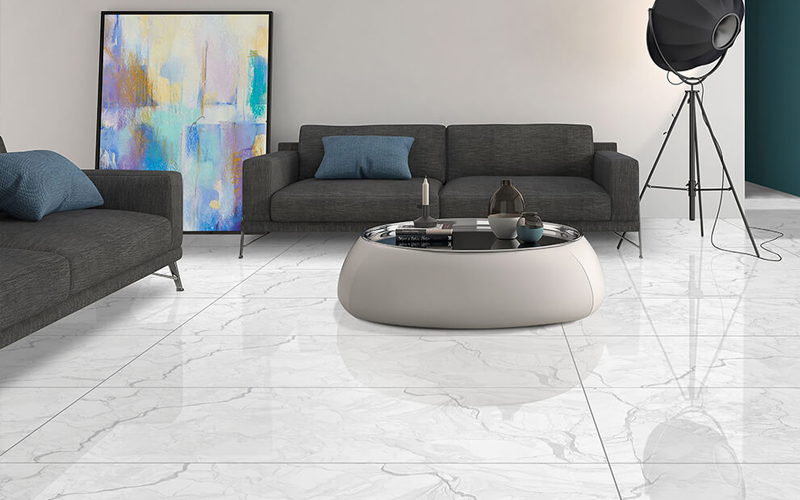Tiles are a popular choice for flooring, walls, and backsplashes due to their durability, versatility, and aesthetic appeal. However, maintaining and caring for your tiles is essential to ensure they remain in excellent condition and last for years to come. In this blog, we’ll share expert tips on how to properly care for your tiles, covering everything from regular cleaning to addressing specific issues.
1. Understand Your Tile Type
The first step in caring for your tiles is understanding the type you have. Tiles can be made from various materials, including ceramic, porcelain, natural stone, and glass. Each type has its own maintenance requirements.
- Ceramic and Porcelain Tiles: These are typically easy to maintain and resistant to moisture. Regular cleaning with mild soap and water is usually sufficient.
- Natural Stone Tiles: Materials like marble, granite, and limestone are more porous and require special care. They often need sealing to prevent stains and damage.
- Glass Tiles: While resistant to stains, glass tiles can show water spots and fingerprints, so regular cleaning is crucial.
2. Regular Cleaning Routine
Establishing a regular cleaning routine is vital for tile maintenance. Here are some expert-recommended steps:
Daily Maintenance
- Sweep or Vacuum: Remove dirt and debris daily to prevent scratches and build-up. Use a soft-bristle broom or a vacuum with a hard floor attachment.
- Spot Clean Spills: Wipe up spills immediately to prevent staining, especially on porous tiles. Use a damp cloth and mild detergent for quick clean-ups.
Weekly Cleaning
- Mop with a Suitable Cleaner: Use a pH-neutral cleaner specifically designed for your type of tile. Avoid acidic or abrasive cleaners that can damage the surface.
- Use the Right Mop: A microfiber mop is ideal as it traps dirt and is gentle on tiles. Make sure to rinse it frequently to avoid spreading dirt.
Monthly Deep Cleaning
- Deep Clean Grout Lines: Grout can accumulate dirt and mildew over time. Use a grout cleaner or a paste made from baking soda and water. Apply it with a toothbrush, scrub, and rinse thoroughly.
- Steam Cleaning: For a deep clean, consider using a steam cleaner. This is particularly effective for ceramic and porcelain tiles, helping to sanitize and remove stubborn dirt.
3. Protecting Your Tiles
Preventive measures can significantly extend the life of your tiles. Here are some expert tips:
Use Doormats
Place doormats at entrances to trap dirt and moisture. Encourage family and guests to wipe their feet before entering to minimize dirt tracked onto your tiles.
Furniture Pads
If you have heavy furniture on your tiles, use felt pads underneath legs to prevent scratching and denting. This also makes it easier to move furniture without causing damage.
Area Rugs
In high-traffic areas, consider using area rugs to protect tiles from wear and tear. Just make sure the rugs are non-slip to prevent accidents.
4. Dealing with Stains
Stains are an inevitable part of tile life, but knowing how to handle them can make a significant difference. Here are some tips:
For Common Stains
- Oil and Grease: Use a mixture of baking soda and dish soap to create a paste. Apply it to the stain, let it sit for a few minutes, then scrub and rinse.
- Wine and Fruit Juice: Blot the area with a paper towel, then use a solution of white vinegar and water (for ceramic and porcelain) or a stone-safe cleaner for natural stones.
- Hard Water Spots: For glass tiles, use a vinegar solution to wipe away spots. For other tiles, a commercial descaler may be necessary.
Addressing Grout Stains
Grout stains can be particularly stubborn. For persistent stains:
- Use a commercial grout cleaner or make a paste with baking soda and water. Apply it to the stained grout, scrub gently with a brush, and rinse well.
- For mildew or mold, a mixture of vinegar and baking soda can help. Apply, let it sit, scrub, and rinse.
5. Long-Term Care
Over time, tiles may require more extensive care:
Sealing Natural Stone Tiles
Natural stone tiles should be sealed to protect them from stains and moisture. Here’s how:
- Choose the Right Sealer: Select a penetrating sealer designed for your type of stone.
- Clean the Surface: Ensure the tiles are clean and dry before application.
- Apply the Sealer: Follow the manufacturer’s instructions, typically applying with a sponge or roller.
- Allow to Dry: Let the sealer dry completely before using the area.
Repairing Cracks and Chips
If tiles crack or chip, it’s important to address these issues promptly:
- For Small Chips: Use a tile repair kit to fill in the damaged area. Follow the instructions for mixing and applying the repair compound.
- For Cracked Tiles: If the crack is severe, you may need to replace the tile entirely. Carefully remove the damaged tile, clean the area, and install a new tile using adhesive.
6. Professional Maintenance
Sometimes, it’s best to call in the experts. Professional cleaning services can provide deep cleaning, sealing, and repairs that may be difficult to achieve on your own. Regular professional maintenance can help maintain the beauty and integrity of your tiles, especially for natural stone or heavily used areas.
Conclusion
Maintaining and caring for your tiles doesn’t have to be a daunting task. By following these expert tips—understanding your tile type, establishing a regular cleaning routine, protecting your tiles, addressing stains promptly, and investing in long-term care—you can keep your tiles looking beautiful and lasting for years to come. Whether it’s a bustling kitchen or a serene bathroom, well-maintained tiles can enhance the overall appeal of your space. Remember, prevention and prompt care are key to enjoying the beauty and durability of your tiles!









